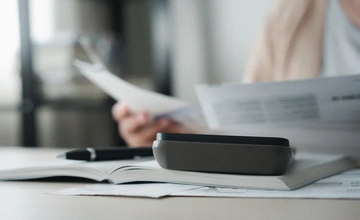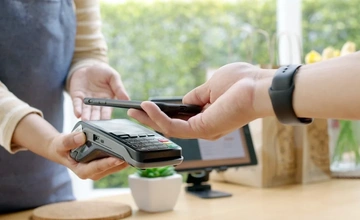Open banking is changing the way we use our money and bank accounts. It makes banking easier, faster, and gives you more control over your money.
Let's explore what open banking means for you and how it can help you manage your money better.
What is open banking?
Open banking is a system that lets you safely share your bank account information with other apps and services. This sharing only happens when you give permission.
With open banking, you can connect your bank accounts to helpful apps that can show you all your money in one place, or find better deals for financial products such as loans and credit cards.
The UK started open banking in 2018. The government wanted to give people more choices with their money and make banks compete harder to give better services. Now, all the big banks in the UK must offer open banking if their customers want it.
How does open banking work?
Open banking works through special connections called APIs (Application Programming Interfaces). Think of APIs as secure doorways that let your banking information travel safely between your bank and other apps you choose to use.
Here's how it works:
- You find an app you like that uses open banking.
- The app asks for your permission to connect to your bank.
- Your bank checks with you that this is okay.
- You say yes and prove it's really you (usually with your fingerprint or face scan).
- The app can now see your bank information, but only what you've allowed.
- You can stop the sharing anytime you want.
The important thing is that you always stay in control. No one can see your banking details unless you say it's okay first.
Why use open banking?
Open banking helps you in many ways. Here are some reasons why people use it:
- See all your money in one place: Connect accounts from different banks into one app to see everything at once.
- Budget better: Apps can sort your spending into groups like ‘food’ or ‘entertainment’ to help you save money.
- Find better deals: Some apps look at how you spend and suggest cheaper energy bills or better savings accounts.
- Pay directly: Pay for things straight from your bank without needing a card.
- Apply for credit more easily: Share your bank details quickly when applying for credit cards, loans or mortgages.
- Avoid overdraft fees: Get warnings when your money is running low.
Open banking makes these things easy without you having to do lots of paperwork or remember multiple passwords.
Pros and cons of open banking
Like anything new, open banking has good points and some things to think about carefully.
✅ Pros:
- More control: You decide who sees your banking information and when to stop sharing.
- Better money tools: Access to clever apps that help you save and spend wisely.
- Time-saving: No more switching between different bank apps or websites.
- Easier payments: Pay directly from your bank account without cards.
- Better banking: Banks are making their own apps better to keep up.
❌ Cons:
- Privacy concerns: Some people worry about sharing their banking information, even though it's done safely.
- Digital only: Most open banking services need smartphones and internet access.
- Learning curve: It takes time to understand how it all works.
- Too many choices: With so many apps available, it can be hard to know which ones to trust.
Open banking apps
Many helpful apps use open banking. Here are some popular types:
- Money management apps: Apps like Snoop and Emma show all your accounts in one place and help you budget. Emma can also help you report rent payments to credit reference agencies.
- Savings apps: Plum and Chip connect to your bank and automatically save small amounts of money for you.
- Credit score improvers: Apps like CredAbility use your information to help you build a better credit score.
- Investment apps: Platforms like Moneybox round up your purchases and invest the spare change.
- Bill switching services: Little Birdie checks for unused subscriptions and where necessary, helps you switch providers.
These apps are usually free to download, though some have premium features you can pay for if you want extra help.
Is open banking safe?
Yes, open banking is designed to be very safe. Here's why you can trust it:
- Regulated by the FCA: The Financial Conduct Authority makes sure all open banking providers follow strict rules.
- Bank-level security: Open banking uses the same high-level security as your bank's own app.
- You stay in control: Nothing happens without your clear permission, and you can stop sharing anytime.
- No passwords shared: You never give your banking passwords to the apps you use.
- Data protection: Your information is protected by data laws, including GDPR.
- Limited access: Apps only see what they need to see, not everything in your account.
Open banking is actually safer than some older ways of connecting to your bank, like screen scraping (where you'd give your actual banking passwords to other companies).
Final thoughts
Open banking gives you more power over your money and helps you make better choices with easy-to-use tools. Though it might seem new and a bit confusing at first, it's designed to be safe and to work for you.
As more people use open banking, we'll likely see even more helpful services appear. If you're curious, try starting with one simple open banking app to see how it works. You might be surprised at how much easier it makes managing your money!
Remember, the choice is always yours – open banking is there if you want it, but you don't have to use it if you'd prefer not to.
Zubin is a personal finance writer with an extensive background in the finance sector, working across management and operational roles. He applies his experience in customer communication to his writing, with the aim of simplifying content to help people better understand their finances.










